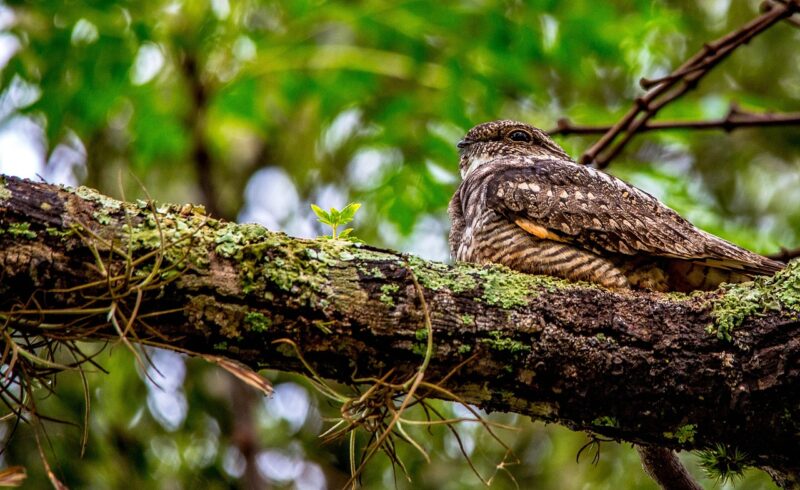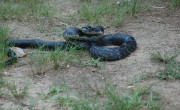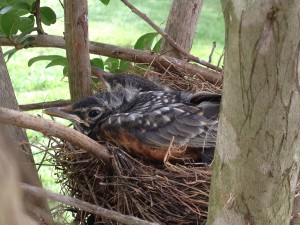
Have you ever wanted the superpower to be invisible–to hide in plain sight? While whip-poor-wills are not exactly invisible, they have an almost supernatural reputation. At one time, you couldn’t go outside at dusk or dawn during the summer without hearing the unique, undulating call of the whip-poor-will, which is where they get their name. Their recognizable up-and-down call sounds like they are yelling “whip poor will!”
Nightjars and Ground Birds
Other than whip-poor-will, these insectivores go by two other names: nightjars and upland ground birds. The term nightjars has a confusing origin. While the name does hint at their nocturnal nature, why jar? A jar can be a harsh and inharmonious sound; however, this attribution does not make sense for the call of the Eastern whip-poor-will, but more for the European Nightjar, a similar species with a more unsettling call. Another explanation for the appellation comes from their large, jar-sized mouths. Along with their long, powerful wings, which allow for long, sustained flight, these aerial predators (which means they catch their food while airborne) fly with their mouths wide open to swallow their preferred diet of flying insects, such as moths, beetles, and mosquitoes, whole.
Another name for whip-poor-wills is upland ground birds, named for their preferred habitat. Whip-poor-wills prefer upland areas (elevated environments typically safe from flooding), especially sparse woodlands regenerating from forest fires and deforestation near fields and other open areas. They are called ‘ground birds’ due to their habit of laying their eggs on the bare forest floor, sometimes covered in a thin layer of leaves. Due to their nesting habits, whip-poor-wills have adapted their mottled plumage (a bird’s feathers) to blend into the patterns of fallen leaves and dirt on the forest floor with collections of spots and streaks of greys, browns, tan, and black.
When to Listen
If you want to listen to them, they can often be heard throughout the summer and late spring at dusk or dawn while they are breeding and preparing for migration. Sometime during fall, they migrate throughout the southern Gulf States and into Central America during the winter months.
Though their calls can still be heard if you listen close enough, many residents of the Carolinas are asking where the whip-poor-wills went. Deforestation and overall loss of habitat have caused these mysteriously evasive birds to be listed as “nearly threatened,” leading to strong conservation efforts to protect one of the eastern coast’s most recognizable calls.
Fun Facts About the Whip-poor-will:
- Until recently, the Eastern whip-poor-will and the Mexican whip-poor-will were considered to belong to the same species. However, genetic differences and the facts that Eastern whip-poor-wills have higher calls and brighter eggs separated the two birds.
- The way to differentiate between male and female whip-poor-wills is simple. Observe the tips of their outermost tail feathers: white for males and buff, or light-brown, for females.
- During migration, whip-poor-wills do not cross open water, preferring to maintain their migratory path over land.
- A group of whip-poor-wills are called a “seek” for their ability to be heard rather than seen or an “invisibility” for their ability to camouflage.
- Whip-poor-wills lay their eggs with the lunar cycle, laying their eggs so they hatch on average 10 days before a full moon. This allows the parents to hunt all night to feed their hatchlings.
Find Out More!
Want to find out more about whip-poor-wills? Check out the resources below:










